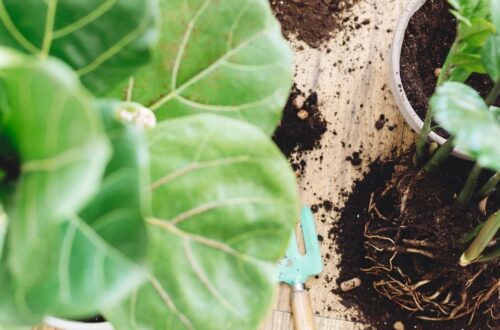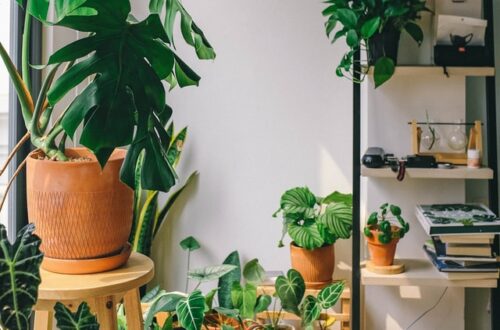Why Does My Calathea Houseplant Have Brown Tips?
Reasons Why Your Calathea Might Have Brown Tips and How to fix it!
Calathea have arguably some of the most beautiful foliage in the houseplant world…when they aren’t being fussy! Are you perplexed by brown, crispy foliage? Do brown tips tarnish the once beautiful soft leaves of your calathea? We’ll go through 5 possible reasons your calathea might have brown tips and give 5 solutions to prevent future brown tips from happening.
1. Humidity Levels Are Too Low
Humidity, or specifically lack of humidity, is one of the biggest culprits for unhappy calathea, which can cause the tips to turn brown. In this case, crisping will generally start at the tips and potentially will move its way inward until your leaf is as crispy as a cracker!
SOLUTION: Calathea typically require between 50%-60% humidity levels. Keep your calathea away from drafts or vents. Some tips for increasing humidity might include :
- Relocating your calathea to a bathroom
- Pebble trays
- And most effectively, adding a humidifier.
2. Pests: Watch out for thrips and spider mites!
You are not the only one admiring your calathea’s soft foliage…pests love it too! In my experience, calathea are particularly vulnerable to spider mites and thrips. They can get fungus gnats too, although they tend to cause much less damage.
If your calathea suddenly starts looking really unhappy, inspect the leaves and stems for pests, particularly the underside of the foliage. One telltale sign for thrips is when brand new leaves are unfurling already crispy (that new foliage is especially!)
SOLUTION: Implement pest prevention measures from the start. Whether it’s giving your plant a bi-weekly shower to blast off any potential pests or using a systemic or topical insecticide, it is worth it. Also be sure to inspect your plants regularly for signs of pests to stop a small outbreak from becoming an infestation.
3. Harsh Water/Fertilizer
Calathea are particularly sensitive to chemically treated tap water or “hard water”. In fact, strong chemicals of any kind (even fertilizer) which can often result in browning leaves or brown tips, or even burnt looking foliage.
SOLUTION: If water is the culprit, you can switch to distilled, filtered, or even rain water if you can source it. Always water with room temperature water (never cold water, as that will send any plant into shock!) and dilute your fertilizer more than the recommended dosage on the label.
4. Watering Habits
On the topic of water, calatheas will very quickly develop brown tips or crispy leaves after a late or missed watering. They do not appreciate dried out soil, as their leaves are thinner, more delicate, and do not retain water unlike plants with thicker, hardier foliage like succulents.
SOLUTION: Keep the soil moist for your calathea to keep brown tips and crispy leaves at bay. A moisture meter is a fantastic and inexpensive way to monitor your plant’s soil, but there are also self-watering planters that you can explore as well.
5. Fungus
Are your calathea’s leaves browning in strange patterns? Crisping at the sides or in inconsistent patterns like spots in the middle? Or perhaps you are doing everything right but STILL getting those brown tips or spots. Your calathea may have a fungal disease. This is a problem that is most often the culprit, but not often heard of for many plant parents.
SOLUTION: You can source anti-fungal sprays and mixtures at most local greenhouses or online. Apply this liberally to your calathea (always read and follow the label). This will help your calathea immensely with brown tips related to fungus.
Additional Calathea Resources:
- Calathea 101: An in-depth Calathea Care Guide
- Calathea Alternatives for Those Who Love Calatheas But Don’t Love Drama
- Top 5 Easiest Calathea
Follow my plant journey on Instagram @plantyquirkyblogger for blog updates and pictures of my pretty plants!

